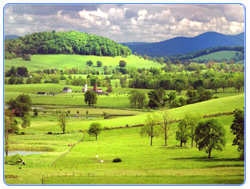|
|
History
| Demography | Topography
| Preparation for Atomic Tests
 CHAGHI/Chagai is the largest district of Pakistan and is located on the
north west corner of Balochistan, Pakistan. It forms a triangular
border with Afghanistan and Iran. Pakistan conducted a nuclear weapons test
in 1998 at Ras Koh Hills Chagai District. CHAGHI/Chagai is the largest district of Pakistan and is located on the
north west corner of Balochistan, Pakistan. It forms a triangular
border with Afghanistan and Iran. Pakistan conducted a nuclear weapons test
in 1998 at Ras Koh Hills Chagai District.
Search
Chagai on Satellite Map
Places of
Interest
History
Chaghi/Chagai District was created in 1896. Nushki was the only sub division
of the district with two tehsils, Nushki and Dalbandin. Naukundi sub tehsil
was upgraded to tehsil in 1950. Chagai district was attached to Kalat
District in 1957 but was detached after two years. The Police Department is
still under the Superintendent of Police, Kalat. Dalbandin Tehsil was
upgraded to Sub-Division on 1 February, 1978. Taftan was created as sub
tehsil in 1981. Chagai sub-tehsil was created with effect from 1 October,
1985. The Assistant Political Agent Nushki remained sub-Divisional
Magistrate of Nushki Sub Division till September 1989 when an independent
post of Additional Political Agent was created for the district. Very little
is known about the ancient history of Chagai.1998 Pakistan conducted their
first ever nuclear weapons test at Ras Koh Hills Chagai District.
The earliest monuments are the ruins of terraced embankments. These are
found at the foot of the Ras Koh hills; they are ascribed to the
fire-worshippers, who are said to have been the inhabitants of this area
more than two thousand years ago. The next traces of ancient history are the
square shaped tombs in the western areas of the district, which are
attributed by the local traditions to the Kianian dynasty of Iran. The
remains of the ruined forts and karezes found in different parts of the
district are assigned to the Arabs. These are also sometimes attributed to
the Mughals and in any case indicate the presence of a richer civilisation
than is now found among the Baloch and Brahui inhabitants of the district.
Demography
According to the 1998 census the population of Chagai District was 202,562,
along with approximately 53,000 Afghan refugees. The population of Chagai
District was estimated to be over 250,000 in 2005. Over 99% of the people of
the area are Muslims. The major Baloch tribes in the district are
Sherzai,Mandazai, Mohammad Hassani, Al Ahmad Mustafa As Saud, Kashani,
Sanjrani, Mengal, Nothazai, and Damanis near the Iranian border.
Topography
The district lies between 27°-55' to 29°-50' north latitudes and 60°-45' to
66°-22' east longitudes. It is located in the extreme west of Pakistan and
comprises the belt which lies south of the Pakistan-Afghanistan boundary,
from the Sarlath Hills on the east to Koh-i-Malik Siah on the west, with a
length of about 576 kilometres and an average breadth of 80 kilometres. The
district is bound on the north by the desert region of Afghanistan (which
lies south of the Helmand River), on the east by the Sarlath hilly range and
Kalat District, on the south by Kharan District and on the west by Iran. The
northern boundary of the district, which separates it from Afghanistan, was
demarcated in 1896 by a joint Afghan-British Commission. The western border
with Iran was demarcated by a joint Pakistan- Iran Commission in 1959. The
total area of the district is 50,545 km˛.
Preparation for Atomic Tests
Pakistan's nuclear explosion test in the hills of Chagai Plans to conduct an
atomic test started in 1976 when Pakistan Atomic Energy Commission (PAEC)
research scientists frequently visiting the area to find a suitable location
for an underground nuclear test, preferably a granite mountains. After a
hectic and day long survey, the PAEC scientists chose the granite mountain
Koh Kambaran in the Ras Koh Hills range in the Chagai Division of
Baluchistan in 1978. Its highest point rises to a height of 3,009 metres
(sources vary). The then-martial law administrator of the province, General
Rahimuddin Khan, spearheaded the construction of the potential test sites
throughout the 1980s.
In March of 2005, the former Pakistani prime minister Benazir Bhutto said
Pakistan may have had an atomic weapon long before and her father had told
her from his prison cell that preparations for a nuclear test had been made
in 1977 and he expected to have a atomic test of a nuclear device in August
1977. However, the plan was moved on to December 1977 and later it was
delayed indefinitely. In an interview with Geo TV, Dr. Samar Mubarakmand of
the Pakistan Atomic Energy Commission, has said that the team of Pakistan
Atomic Energy Commission developed the design of atomic bomb in 1978 and had
successfully conducted a cold test after developing the first atomic bomb in
1983. |




 CHAGHI/Chagai is the largest district of Pakistan and is located on the
north west corner of Balochistan, Pakistan. It forms a triangular
border with Afghanistan and Iran. Pakistan conducted a nuclear weapons test
in 1998 at Ras Koh Hills Chagai District.
CHAGHI/Chagai is the largest district of Pakistan and is located on the
north west corner of Balochistan, Pakistan. It forms a triangular
border with Afghanistan and Iran. Pakistan conducted a nuclear weapons test
in 1998 at Ras Koh Hills Chagai District.